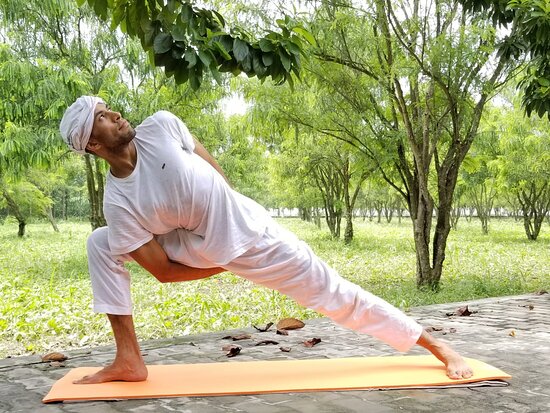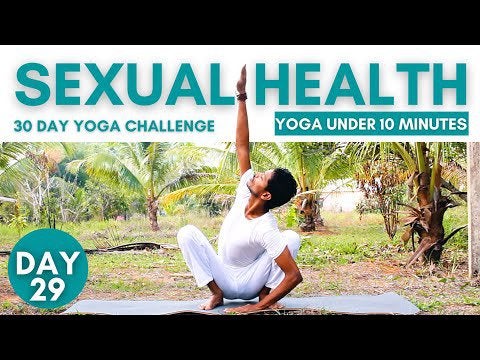
Safety is one the most important things about yoga. Stretching regularly is important to prevent injury. Asanas should be performed with awareness. To achieve asanas, avoid straining or jerking. For relaxation, try practicing after class.
Stretch frequently to decrease the risk of injury
Regular stretching can reduce the risk of injury by lengthening or loosening the muscles. This will make them more resistant to tearing while exercising. It is important to hold stretches for at least 20 seconds. This will keep the muscles still and prevent them from bouncing.
Yoga requires flexibility and strength. Over-stretching can result in injury, or worsening an existing injury. Yoga classes come in a variety of intensities, from intense stretching to gentle physical workouts. You can reduce your risk of injury by choosing the right class for you and practicing stretches regularly to avoid injury.

Listen to your body
One of the key principles of yoga is to listen to your body. Respect your limits, and don't let your ambitions or ego dictate how far you can go. Your body signals are important when you practice yoga poses. This is especially true if you're trying something new or difficult. Playing with your "edge" is a good way to guide yourself. The point where you are able to express yourself best from a pose is your edge. It can change depending on many things.
If the pose is uncomfortable or not working, you might need to alter it. You might end up hurting your body more than you intended. This is especially true of yoga classes, which are challenging.
To achieve asana, don't strain or jerk.
When doing asanas, be sure to maintain proper alignment. It is important not to strain or jerk to get a pose. You should instead maintain a relaxed, smooth motion all throughout. Don't strain or jerk in order to reach Bridge Pose. This could cause back pain.
Muscle fascia, the third connective tissue which affects flexibility, is the second. It contributes nearly 35% of a muscle's total weight and about 41% to its resistance against movement. It separates individual muscle fibers into bundles that transmit force. Paschimottanasana is an example of this. It's important not to strain your muscles or jerk in order to attain asana.

Take a class after you finish to relax.
Try to relax after a yoga class. Reading can help you relax while simultaneously ignoring stress and maintaining a healthy mental state. This is especially important if your yoga practice takes place in a drafty environment. You'll be grateful you took the time to unwind after your practice of yoga.
Yoga classes are primarily focused on stress reduction and strengthening muscles. This is a good thing, but fast-paced movements can be very damaging to the body. You can try restorative yoga poses which combine slow movements with props. These yoga poses are more comfortable for practitioners, and they can be held longer. This helps to calm the mind.
FAQ
Are there any side effects to yoga?
Yoga poses some risks, as with all physical activities. Injury is the main danger. You should be able to safely perform each pose.
If you are just beginning yoga, you might feel dizzy when standing on the head.
This is caused by blood pooling in your brain. You don't have to worry about this, as it will go away quickly.
Do you feel chest pains when doing downward-facing dog? Don't hold the breath. It will only make the situation worse and increase your heart rate.
How many types of yoga are there?
Bikram Yoga (Bikram heated) is the most widely practiced type of yoga. Other forms include Hatha, Ashtanga, Vinyasa, Iyengar, Kundalini, Yin, Power Yoga, Flow Yoga, Reiki, Pilates, Restorative, Aerial, etc.
Is it hard to do yoga?
It depends on the type of yoga that you practice. Vinyasa flow (or power) yoga involves lots of jumping, twisting, and turning movements. Because of this, people often sweat heavily while practicing.
Hatha yoga, on the other hand, focuses more on forwarding bends or twists. Because these poses aren't very strenuous, most practitioners won't experience heavy perspiration.
What happens if you do yoga every day?
You feel relaxed, calm, and centered. It improves balance, posture, and flexibility.
You become more aware how your body feels as you move. This awareness makes you more mindful and conscious of yourself.
Yoga can help you improve your concentration.
Your mind is sharper, clearer, and more focused. It calms the nervous system. It helps to reduce stress levels. It gives you a feeling of well-being and peace.
How long does a yoga class last?
Yoga classes usually last anywhere from 45 minutes up to 90 minutes. Some teachers offer shorter and longer sessions at different times of the week.
Can yoga help you quit smoking?
People may stop smoking by practicing yoga. Yoga makes them feel more positive, and reduces stress. It also helps reduce weight gain from overeating food. This could allow you to quit smoking.
How long does it take for a professional yoga instructor?
It depends on the style of yoga you are practicing. Some styles are slower than others. But even if you're just beginning, you can expect to improve over time.
You will improve your skills the more you practice. After a few weeks of consistent practice, you will notice improvements.
Statistics
- A 2020 review of 27 studies (1,805 total participants) of yoga interventions in children or adolescents found reductions in anxiety or depression in 70 percent of the studies, with more promising results for anxiety. (nccih.nih.gov)
- According to the Agency for Healthcare Research and Quality, falls are incredibly common among older adults in nursing facilities. Even the simplest ones can increase the risk of death (24). (healthline.com)
- The people in the yoga group were 37 percent more likely to have quit smoking by the end of the 8-week program. (nccih.nih.gov)
- Lock in 25% off your Founding Member rate. (corepoweryoga.com)
- According to calorie estimates calculated at Harvard Medical School, the average 125-pound person burns about 120 calories in a half hour of hatha yoga, and a 185-pound person burns about 178 calories in that half hour. (everydayhealth.com)
External Links
How To
Yoga can help menopause symptoms
Yoga is an ancient Indian practice that focuses on yoga, meditation, and breathing. It has been practiced for thousands of years as a way to stay fit. It is becoming increasingly popular as people look for ways to stay fit and healthy in times of stress and illness.
Yoga is based around using physical postures (asanas) to stretch muscles, improve posture and increase flexibility. This helps to relieve tension and build strength and stamina.
There are many types of yoga: Hatha, Vinyasa flow and Bikram. Each type focuses on specific aspects of the body, such as breath, stretching, and relaxation.
All forms of yoga aim to bring about balance in the mind and body. Yoga has many benefits, including improved fitness, weight loss, improved sleep quality, energy levels, and reduced stress.
Yoga may be beneficial in the treatment of anxiety, depression, insomnia, and other conditions. However, there is little conclusive evidence of its effectiveness for other health issues such as menopausal symptoms.
Yoga helps you feel happier, healthier, and more fulfilled. It also teaches you how relax and manage stress situations. These skills could prove useful when you are going through menopause.
It is important for you to know that yoga can cause muscle soreness. If you have concerns about your current condition or are unsure whether you would benefit from yoga, speak to your doctor before starting.